Florian Lenz
Autonomous microservices with event-driven architecture
#1about 2 minutes
Understanding request-driven architecture and service orchestration
Request-driven architecture uses synchronous communication where an orchestrator service manages the flow between other services.
#2about 2 minutes
Decoupling services with an event broker
Event-driven architecture uses an event broker to decouple services, allowing them to communicate asynchronously through events.
#3about 3 minutes
Weighing the pros and cons of event-driven systems
Event-driven systems offer resilience and plug-and-play functionality but introduce challenges like unclear process flows and complex debugging.
#4about 3 minutes
Using the event notification pattern for consistency
The event notification pattern sends a minimal event with just an ID, requiring consumers to make a callback for more data, which favors consistency over availability.
#5about 3 minutes
Achieving autonomy with event-carried state transfer
The event-carried state transfer pattern includes all necessary data within the event itself, eliminating callbacks and promoting service autonomy and availability.
#6about 4 minutes
Storing event history with an event store
An event store captures the complete history of all events, enabling advanced analytics and answering questions that current-state databases cannot.
#7about 4 minutes
Rebuilding system state with event sourcing
Event sourcing uses the event store as the single source of truth, allowing systems to be rebuilt or migrated by replaying events from the beginning.
#8about 1 minute
Defining the core traits of autonomous microservices
An autonomous microservice is highly independent, prioritizes availability over consistency, and uses events for communication to achieve resilience.
#9about 1 minute
Prioritizing business requirements over technical trends
The primary goal is to deliver business value efficiently, which means choosing the simplest architecture that works, even if it's request-driven.
Related jobs
Jobs that call for the skills explored in this talk.
Matching moments
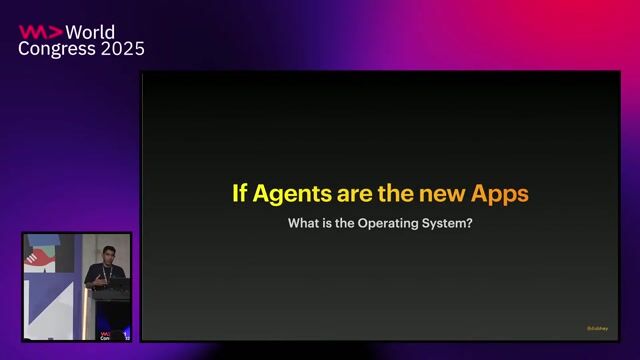
05:33 MIN
Why event-driven architecture is key for agents
Event-Driven Architecture: Breaking Conversational Barriers with Distributed AI Agents
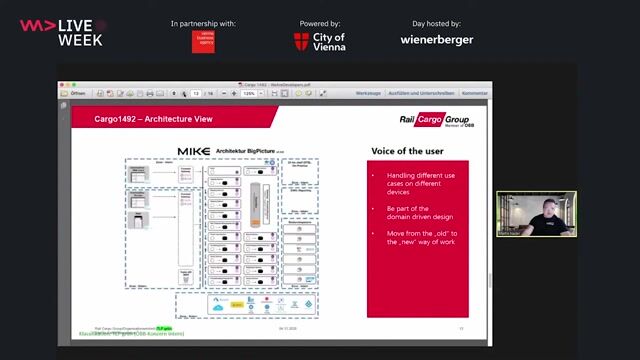
35:33 MIN
Building an event-based microservice architecture for agility
The user in the eye of the Cargo1492 storm
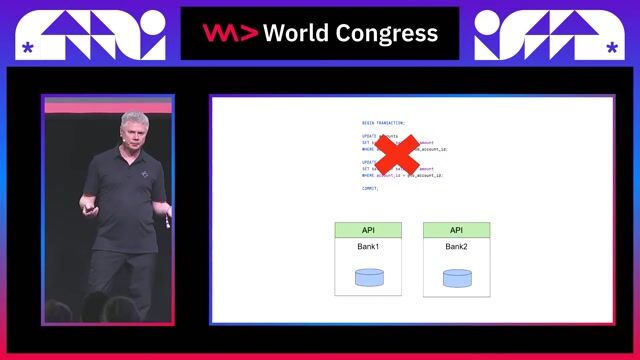
05:22 MIN
The hidden costs and challenges of event-driven architectures
Durable Execution: A Revolutionary Abstraction for Building Resilient Applications

03:57 MIN
Choosing between microservices and serverless architectures
Serverless-Native Java with Quarkus
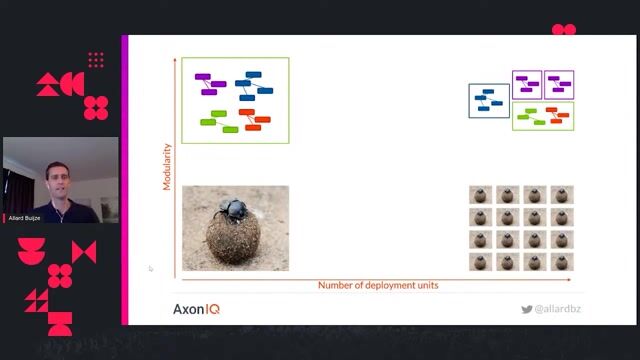
05:56 MIN
Using events to decouple services in architecture
CQRS and Event Sourcing without the pixie dust
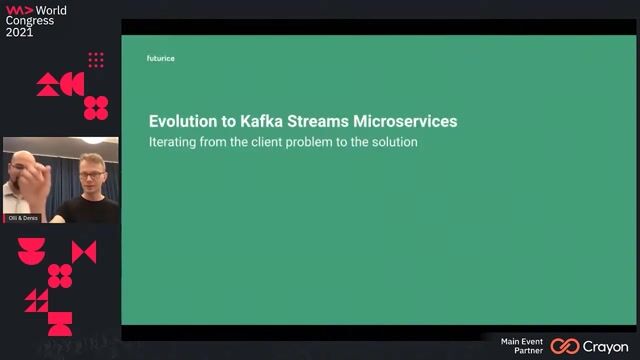
04:19 MIN
Evolving from classic microservices to event-driven design
Kafka Streams Microservices

10:34 MIN
Decoupling microservices with event streams
From event streaming to event sourcing 101
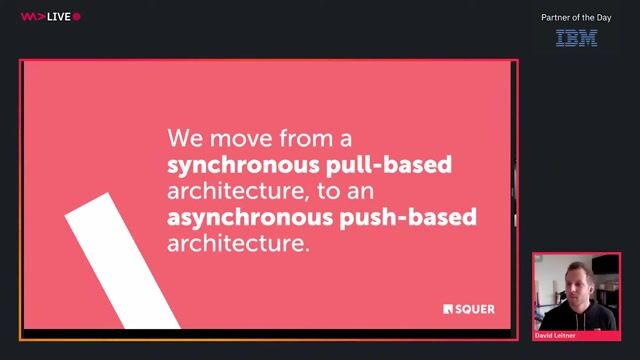
22:27 MIN
Tracing the evolution of microservice communication patterns
Rethinking Reactive Architectures with GraphQL
Featured Partners
Related Videos
 46:24
46:24The Rise of Reactive Microservices
David Leitner
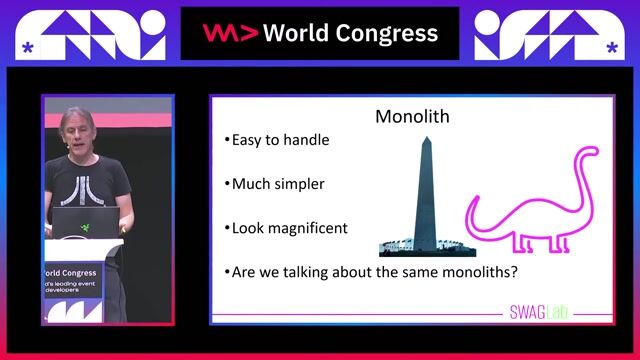 25:05
25:05Microservices? Monoliths? An Annoying Discussion!
Eberhard Wolff
 43:27
43:27CQRS and Event Sourcing without the pixie dust
Allard Buijze
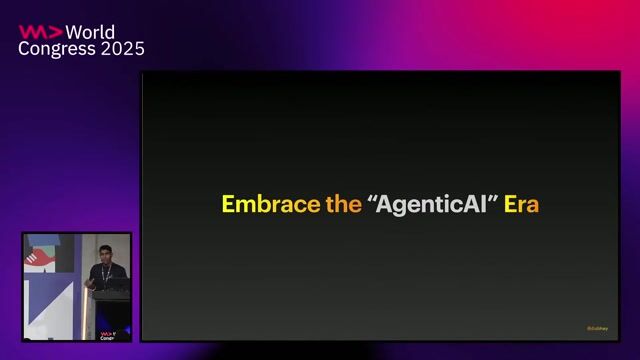 22:19
22:19Event-Driven Architecture: Breaking Conversational Barriers with Distributed AI Agents
Abhimanyu Selvan
 59:03
59:03Multiple Ships to the Island - Micro Frontends & Island Architectures
Florian Rappl
 43:13
43:13It’s all about the domain, honey ! Experiences from 15 years of Domain-Driven Design
Carola Lilienthal
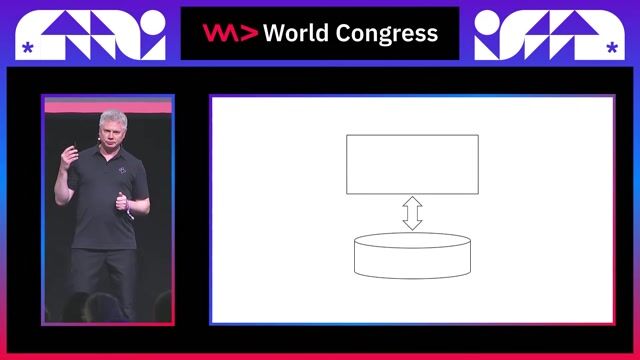 26:08
26:08Durable Execution: A Revolutionary Abstraction for Building Resilient Applications
Maxim Fateev
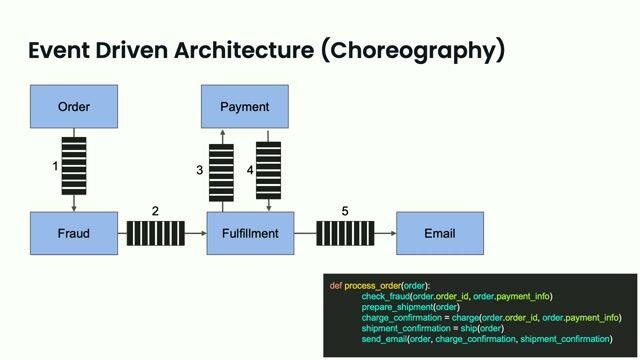 29:32
29:32Is your backend a hodgepodge of queues, event stores and cron jobs? Durable Execution to the Rescue.
Maxim Fateev
Related Articles
View all articles.gif?w=240&auto=compress,format)



From learning to earning
Jobs that call for the skills explored in this talk.

Senior Software Architect - Scalable Microservices & Security
team
Barcelona, Spain
Senior
Microservices

Solution Architect (self-healing Micro-Frontend)
Westhouse Consulting GmbH
Intermediate
React
DevOps
Spring
Kotlin
Grafana
+6


Frontend Engineer - React (f/m/x) Germany-based
Douglas GmbH
Düsseldorf, Germany
Intermediate
Senior
React
TypeScript


Lead Full-Stack Engineer
Hubert Burda Media
München, Germany
€80-95K
Intermediate
Senior
React
Vue.js
Node.js
MongoDB
+1


Senior Backend Developer (m/f/d)
Laserhub GmbH
Stuttgart, Germany
Remote
€70-80K
Senior
MySQL
Docker
MongoDB
+2

Full Stack Developer (all genders welcome)
ROSEN Technology and Research Center GmbH
Osnabrück, Germany
Senior
React
DevOps
Next.js
TypeScript
Cloud (AWS/Google/Azure)